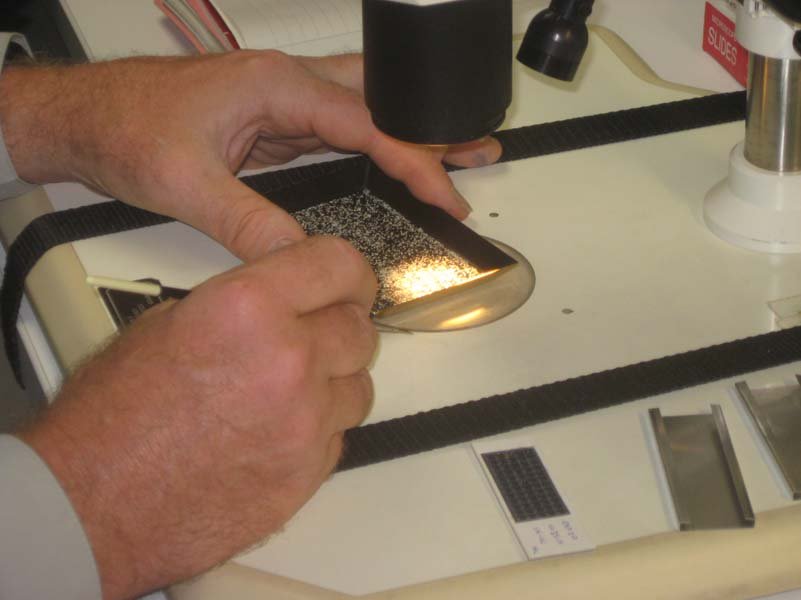
Spending the Day with Bugs
Believe it or not, even scientific language has its own slang.
In the micropaleontology world, the tiny microfossils called foraminifera are affectionately known as “bugs”. I spent a good part of yesterday in the micropaleontology lab learning just how much work is involved in getting these bugs to the point where you can work with them.
Most of the species of forams (short for foraminifera) are so small that it would take 15 or 20 of them to equal a millimeter in length. Finding them is not like picking up seashells on the beach. The first thing that happens is that a core comes on deck. The scientist on “core catcher” duty goes out to the catwalk and gets a section of the sediment from the core catcher (the very bottom part of the core). The piece of sediment is about as big around as a can of soda, but perhaps not as tall. It depends on how well drilling is going.
After bringing the sample in, it gets water added to the container so it can soak. After a good soak, the muddy water and goo is poured into a sieve (like a strainer, but with REALLY small holes) Water is added, and the mud is worked with your fingers breaking up all the clumps until you have a really smooth, wet mud. The sample is rinsed for a bit longer, until the water is mostly clear. At this point, the sediment is poured on to a small baking sheet and put into an oven that is about 120 degrees Celsius. The sediments bake slowly until all the water is evaporated and they are totally dry. When the sample is dry, someone (yesterday it was me!) takes the sample and uses a splitter to divide it into four equal portions – one for each of the scientists working on forams. The samples go into tiny glass bottles.
After all this, they are ready to go under the microscope. The scientist takes the sample, sieves it again and uses a tiny brush to pick out the forams while looking under the microscope. (See photo above). Then they are mounted on a slide and ready for study.
Who knew it would be so much fun to play with “bugs”.